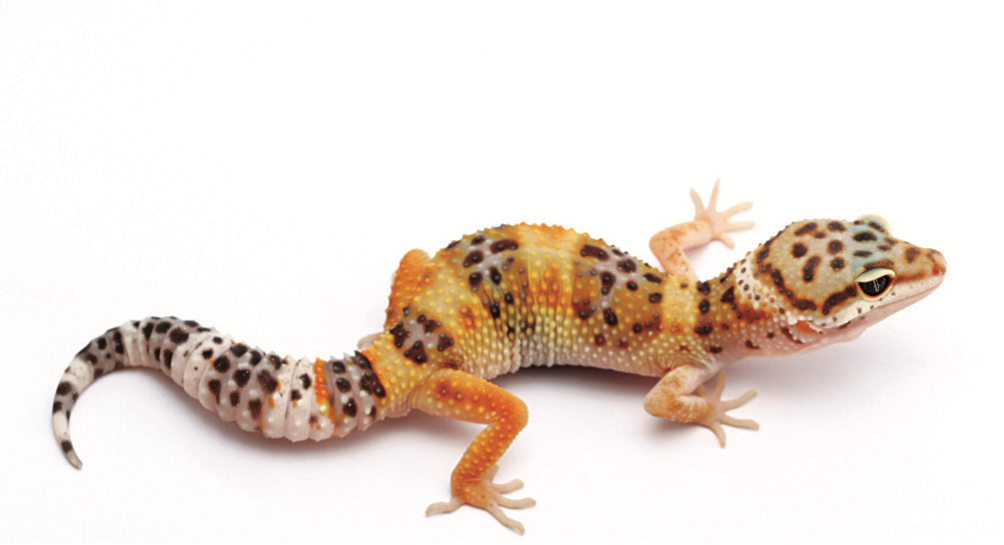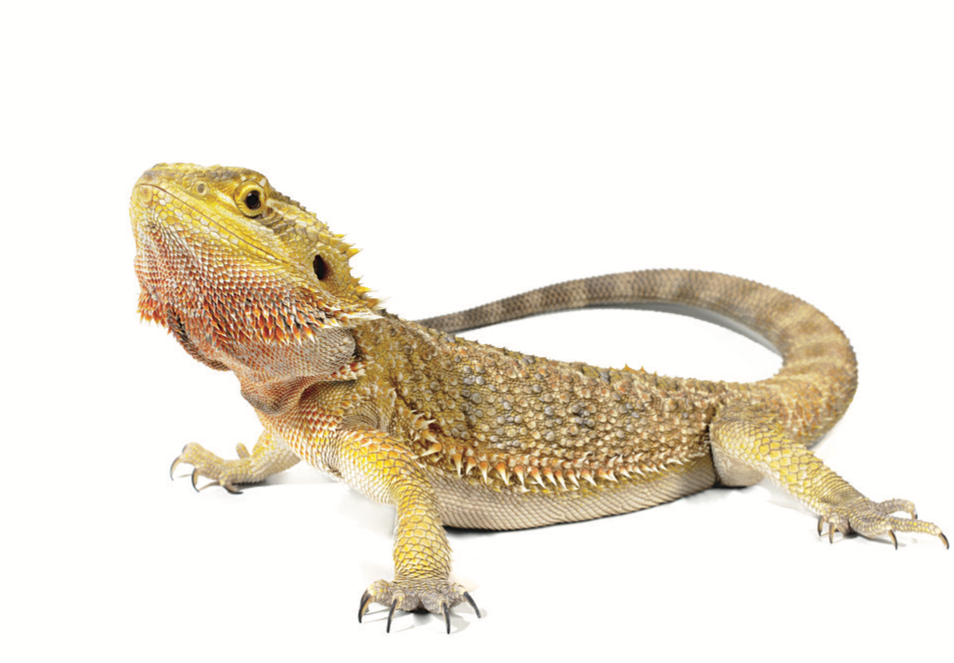Reptiles are known to be cold, scaly, and sometimes even slimy. Their unusual appearances notwithstanding, they have been growing in popularity as animal companions around the world.
While some might still be put off by the thought of caring for them — they are far from the usual cuddly and fluffy animal companions, after all — having a cold-blooded animal as a legally- obtained companion can prove to be just as fun, safe, and fascinating, sometimes even more so!
The question is: What’s a good reptile to care for if you’ve never done it before?
Taking care of a reptile doesn’t have to be hard. Although it’s true that there are a lot of high-maintenance reptiles who can get sick or die easily when mishandled, there are some who are a lot more resilient, even under the care of someone without a lot of experience.
Below is a list of beginner-appropriate reptiles whom almost anybody, even kids, can take care of (with proper assistance, of course).
- LEOPARD GECKOS (Euplepharis macularius)
Note that these aren’t your usual tiny Geckos whom you see hanging around on the walls of your house!
Leopard Geckos are thick-tailed, insect-eating, colorful, and docile reptiles who are fine being carried around once in a while (just never pull on their tails as they can easily be dropped). Naturally found in rocky, dry places like in Afghanistan and Pakistan, they prefer warmer climates.
However, they do not require basking lights as they come out at around twilight to nighttime and have more sensitive eyes compared to the average day-walking Lizard.

BASIC CARE
DIET: As insectivores, they thrive on Dubia Roaches, Superworms, Crickets, or Leopard Gecko gel.
ENCLOSURE: Make sure they have multiple hiding spots within the enclosure, including one humidity hide that will help them shed and one warm hide.
Under tank heaters are usually placed under the warm hide if the environment the gecko is living in is too cold.
SCRATCHING SURFACE: They need a rough surface to scratch on — note that this can also be the hide used. This will help them remove their old skin once it’s time to shed.
HYDRATION: Provide a saucer of clean water for them to drink from, especially during hot days.
TEMPERATURE: Buy an under-tank heater, especially if the room they are staying in is air-conditioned.
Remember: Leopard Geckos are crepuscular, which means that they are mostly active as soon as the sun starts to go down. They therefore have light-sensitive eyes. It is not recommended for them to have basking lights nor UV as this can hurt their eyes.

What I personally like about Leopard Geckos compared to their cousins, the Crested Geckos (also popular as beginner companions) is that they don’t have the ability to stick to walls; hence, they don’t run away easily or escape to the ceiling.
They do not run fast or bite. They also have an extremely fascinating ability to store fat and nutrients in their thick tails and may even go a few days or weeks without eating — of course, it is not recommended to starve them.
They come in a variety of different colors and morphs.
2. RED-EARED SLIDERS (Trachemys scripta elegans)
Red-Eared Sliders are the kind of aquatic Turtles you would have seen everywhere as a kid since they are commonly found in shops. Just like ninja Turtles, you can easily identify them because of the red band around their eyes that look like a mask.

BASIC CARE
DIET: As omnivores, they need quality pellets that provide vitamins, protein and calcium. They also need Fishes, veggies, and fruits given in variety.
ENCLOSURE: Provide clean water for them to swim in. The container or pond is ideally around twice as deep as the length of the turtle. Provide a docking area where they can dry off as well.
They also need adequate space to move around. An adult will need a 75-gallon tank. Do not house multiple Turtles in
a small enclosure as they can become territorial and may eat or kill each other.
Not many people know this, but an adult Red-Eared Slider can grow up to 10 to 12 inches! Be ready to adjust the size of their enclosure accordingly.
Never release them into the wild as they can disrupt the natural ecosystem. This is a common scenario around the world due to irresponsible people getting rid of the Turtles once they get bored taking care of them.
Please be sure to properly care for them throughout their whole life cycle.
TEMPERATURE: Lastly, they need a basking spot — usually above the docking area. This may require either a heat bulb or direct exposure to sunlight for them to bask in.
They don’t need much attention as they are perfectly happy swimming and basking all day, but one should still perform maintenance on them once in a while. With proper maintenance, they should be able to shed their shells without much of a problem or experience shell rot.
Brush off piled-up algae with a soft toothbrush and regularly change their water, as these Turtles tend to dirty up their enclosures frequently.
3. BEARDED DRAGONS (Genus: Pogona)
Bearded Dragons are spiky, impressive-looking Lizards who are often quite docile. Although their temperament may vary, most of them like being handled without much problem.
Those caring for reptiles for the first time usually pick either Leopard Geckos or Bearded Dragons, usually opting for the latter as they allegedly show more personality.
They aren’t exactly tiny Lizards, but they aren’t gigantic, either. An adult can grow up to 24 inches which, in my opinion, makes them a good size for beginners, considering that other reptiles can grow 6 to 7 feet long, sometimes more.

BASIC CARE
DIET: They are omnivores, which means they eat insects (Dubia Roaches, Crickets, Superworms) and vegetables (squash, kale, mustard greens, bell peppers).
TEMPERATURE: They need artificial heat. Bearded dragons need a really hot basking spot, since they are from desert-like climates. Be sure to either bask them outside provided the weather is appropriate or supply them with a basking bulb made specifically for desert reptiles.
They will also need UV light for proper development.
4. BALL PYTHONS (Python regius)
Ball Pythons are one of the most adorable Snakes around because of their little Puppy Dog eyes and snouts. Although they can grow quite thick and long, giving them an intimidating look, they tend to curl up into a ball when frightened (hence their name) rather than attack right away. This makes them the perfect Snake companion for first-timers.

BASIC CARE
DIET: As carnivores, they require different prey, such as rats, quail, and mice.
ENCLOSURE: They need multiple hiding spots that aren’t too big. Ball Pythons like feeling safe, so they tend to squeeze themselves into dark hiding spaces. Having different hides helps lessen their stress.
HYDRATION: The water in their dish should be clean at all times.
TEMPERATURE: Provide a good source of heat if they are housed in a cold room. Ball Pythons, just like all reptiles, are cold-blooded, so be sure to provide a source of heat if the temperature falls below 23 degrees Centigrade.
One advantage of caring for a Snake is that they digest their meals over a period of a few days, so you will have to feed them live food maybe just once or twice a week — sometimes every two weeks — depending on their size, health, and age.
They come in a variety of morphs. They don’t mind curling up next to you for warmth once they’ve learned to trust you.
5. RED-FOOTED TORTOISE (Chelonoidis carbonarius)
Tortoises in general are pretty low-maintenance. Unlike Turtles, Tortoises are slow-moving land-dwelling creatures and prefer warm, heated places. They like lots of veggies and fruits to munch on.
Red-Footed Tortoises specifically are probably one of the most popular Tortoises because of how impressive they look. They don’t grow as massive as other Tortoises.

BASIC CARE
DIET: They thrive on a mixed diet of various veggies and fruits. Make sure to mix up their diet once in a while so they get a wider variety of nutrients.
Prepared pellets that include protein are also available in the market for a more convenient way to feed.
HUMIDITY: They need soaking sessions. It’s good to keep the humidity a bit high in order to encourage smooth shell growth and prevent shell pyramiding (that’s when the shell grows bumpy).
Having a water dish and occasionally spraying them also helps.
TEMPERATURE: They need hot basking spots. Tortoises love to bask under the sun, so be sure to provide a warm place where they can hang out.
If possible, keep them outside if the weather is appropriate as they would be happier in a bigger space with fresh air. Just make sure it’s not raining and not too cold.
Tortoises are prehistoric-looking companions and are so much fun to watch as they walk around and explore. Though it’s recommended that they are kept outdoors, it is possible to have them thrive indoors, provided that their needs are met.

PREPARATION IS KEY
Depending on the kind of reptile you plan to take care of, you have to prepare for their needs. The care you would give a Frog or Snake will be quite different from the care you would give a Gecko or Iguana.
Thus, you have to research. The lists above are far from complete, and there are a lot of things for you to know before taking care of a reptile. Before committing to any companion animal, know how they thrive in their natural environment. Even captive-bred animals will still follow their basic instincts and requirements.
What they eat, their sleeping patterns, and especially the kind of environment they thrive in must be taken into consideration when you’re deciding on which kind of reptile to care for. Although there are many tools and materials specifically designed to mimic their natural environment, always consider if you can realistically provide them with all that they need to thrive well.
Remember: Keeping reptiles happy becomes easier once you get the basics down.






